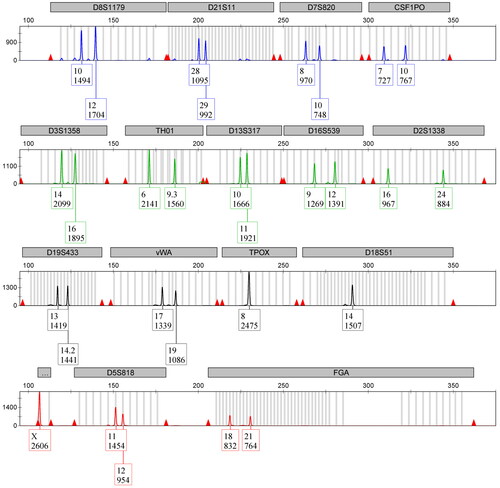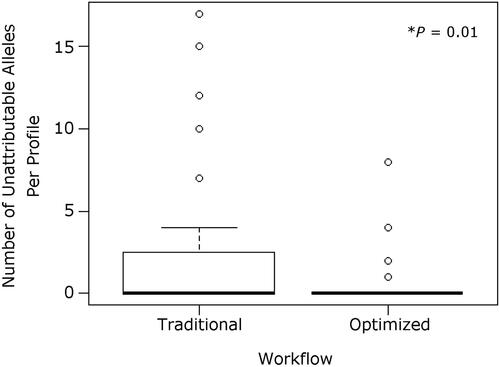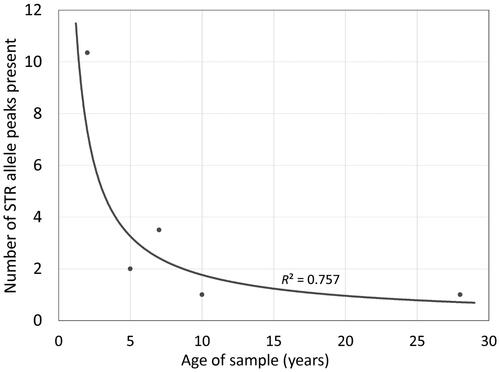Figures & data
Figure 1. Short tandem repeat (STR) electropherogram of aged (2-year-old) archived latent fingerprint (ALFP) lift card DNA sample processed using the optimised workflow. This ALFP lift card sample was treated with magnetic powder prior to collection. The resulting STR profile is representative of the four total from this group that included detection of all expected STR alleles. All peaks are well above the stochastic threshold, with no artifacts noted.

Table 1. Effect of DNA workflow on DNA yields and observed short tandem repeat (STR) profiles obtained from aged archived latent fingerprint (ALFP) samples.
Table 2. Effect of storage time on DNA yields obtained from archived latent fingerprint (ALFP) samples using an optimised workflow.
Figure 2. Number of unattributable short tandem repeat (STR) alleles observed in 2-year-aged samples for each workflow tested. While most samples analysed with either method showed no unattributable STR alleles (including drop-in alleles), those following the traditional workflow had significantly more unattributable alleles present (1.96 per profile, n = 47) compared to the optimised workflow (0.45 per profile, n = 95). This could be caused by variations in the workflow, such as sample preparation or concentration method used.

Table 3. Effect of storage time on observed short tandem repeat (STR) profiles obtained from archived latent fingerprint (ALFP) samples using an optimised workflow.
Figure 3. Effect of storage time on average number of alleles observed across entire short tandem repeat (STR) profiles from archived latent fingerprint (ALFP) samples using an optimised workflow. While a decrease in the number of detected alleles is observed as sample storage time increases, amplifiable DNA (DNA capable of being detected via capillary electrophoresis) was shown to be obtainable from all samples regardless of age.

